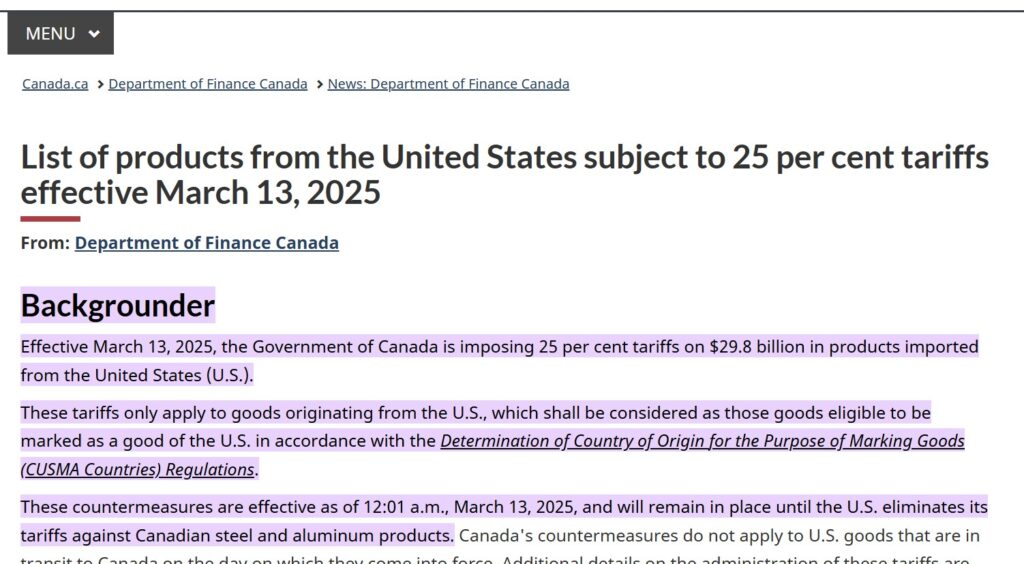Introduction
When the U.S. and China impose tariffs on each other, you might think it’s a problem for their economies—not Canada’s. But in today’s interconnected global supply chains, trade wars between major economies create a ripple effect, driving up costs for Canadian homeowners and contractors.
From lumber and steel to appliances and plumbing fixtures, tariffs disrupt the flow of goods, leading to higher prices, delays, and shortages in Canada’s renovation industry.
In this blog, we’ll explore:
- How U.S.-China trade tensions indirectly affect Canadian renovation costs
- The key materials caught in the crossfire (lumber, steel, fixtures, appliances)
- Why Canada’s reliance on imports makes it vulnerable to foreign tariffs
- Real-world examples of how tariffs have increased renovation expenses
- Strategies for homeowners and contractors to cope with rising costs
By the end, you’ll understand why global trade disputes are making your home upgrades more expensive—and what you can do about it.
Why Do U.S. & China Tariffs Affect Canada?
Canada doesn’t exist in a trade vacuum. Even if tariffs are imposed by (or on) other countries, they impact Canadian consumers because:
- Canada Relies on Imported Materials
- Many building supplies, like steel, appliances, and fixtures, are imported from the U.S. and China.
- When tariffs make these goods more expensive abroad, Canadian importers pay higher prices.
- Supply Chain Disruptions
- Tariffs slow down trade, causing delays and shortages in materials.
- Example: U.S. tariffs on Chinese goods forced suppliers to reroute shipments, increasing wait times for Canadian buyers.
- Domestic Price Increases
- Even Canadian-made products (like lumber) face higher demand when imports get pricier, pushing up local costs.
Key Materials Affected by U.S.-China Tariffs
1. Steel & Aluminum
- U.S. tariffs (25% on steel, 10% on aluminum) initially targeted China but also impacted Canada.
- Result: Canadian contractors pay more for structural steel, rebar, and nails.
- Source: United States Surtax Order (Steel and Aluminum 2025)

2. Appliances & Fixtures
- Many kitchen appliances, sinks, and faucets are made in China and hit by U.S. tariffs.
- Since Canada imports these goods, prices have risen 10-25%.
- Source:List of products from the United States subject to 25 per cent tariffs effective March 13, 2025

3. Lumber & Wood Products
- The U.S. imposes tariffs on Canadian softwood lumber (averaging 11-20%).
- This reduces supply, increasing costs for framing, plywood, and flooring.
- Source: Canadian lumber hit with 34% duties even before Trump tariffs

4. Electrical Components & Lighting
- Wiring, switches, and LED fixtures often come from China.
- Tariffs add 5-15% to these costs, raising renovation budgets.
The Real-World Impact on Canadian Renovations
1. Contractors Face Squeezed Margins
- Many absorb costs to stay competitive, cutting into profits.
- Others raise prices, making renovations less affordable for homeowners.
2. Homeowners Experience Budget Overruns
- Kitchen Remodel can jump to 60,000+ due to pricier cabinets, countertops, and labor.
- Some delay projects, waiting for prices to stabilize.
3. New Home Construction Gets More Expensive
- Higher material costs increase housing prices, worsening affordability.
How Can Homeowners & Contractors Adapt?
1. Source Canadian-Made Materials
- Look for locally produced lumber, steel, and fixtures to avoid import tariffs.
2. Consider Alternative Materials
- Use engineered wood instead of solid hardwood.
- Choose quartz or porcelain over tariff-hit granite countertops.
3. Buy in Bulk or Time Purchases Strategically
- Contractors can pre-order materials before prices rise further.
- Homeowners can watch for seasonal sales at Home Depot, Lowe’s, or local suppliers.
4. Negotiate with Suppliers
- Some distributors offer discounts for large orders or cash payments.
Will Tariff Pressures Ease Soon?
Trade policies remain unpredictable, but:
- U.S.-China tensions could keep tariffs in place for years.
- Supply chain improvements may gradually lower costs.
- Canadian trade deals (e.g., with Europe) could open new material sources.
Until then, budgeting an extra 10-20% for renovations is wise.
Conclusion: Navigating Tariff-Driven Renovation Costs
U.S. and China tariffs don’t just hurt their own economies—they create a domino effect, making Canadian renovations more expensive. By understanding these global forces, homeowners and contractors can make smarter choices, from sourcing locally to adjusting project timelines.
Stay informed, stay flexible, and plan for the unexpected—because in today’s trade climate, renovation costs won’t stabilize anytime soon.
Further Reading:
Have you faced higher renovation costs due to tariffs? Share your experience in the comments!

